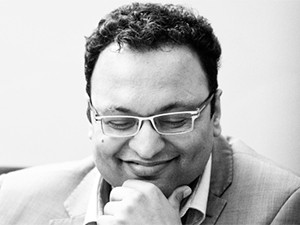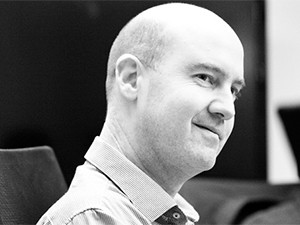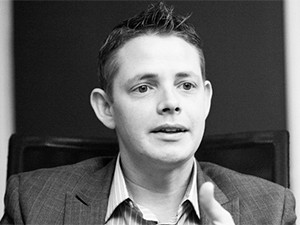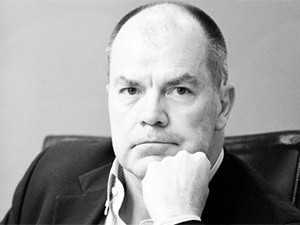
"All under heaven." This was the mandate of Qin Shi Huang, first emperor of China. Over 2 000 years ago, he conquered the disparate and warring kingdoms of the Far East, believing a united nation is a strong nation.
Qin would have been very fond of ERP, or enterprise resource planning. Its name is an artefact from ERP's early days in the manufacturing sector. Today's ERP is very different: in a business landscape heavily reliant on technology, it is becoming the backbone that unites all: silos, processes, people, even what your fridges are thinking.
As one attendee at this roundtable put it, ERP is about the users: it allows them to go about their tasks with the best technology tools at hand. It's also about the big picture: with ERP, company bosses have as broad or surgical a view of operations as they desire.
But ERP can be confusing and intimidating, which is why ITWeb invited seven ERP experts to discuss this glue between business and technology.
Pillars of ERP
There are four forces that shape today's ERP. Although in no particular order, first is the integrated user. Employees are often relegated to paper pushers, not active collaborators in a business. But this is changing as end-users, through the catalyst of smart devices, build a close relationship with technology that both hones their expectations and creates opportunities for companies.
"Technology is being defined by the user, and technology is defining the roadmap for ERP," says Wesley Ekman, regional sales director, SADC at Sage ERP Africa. "If you look at the simplicity of a phone... that's the trend going into modern ERP. The ability to give people the functionality on the devices they want, in the format that is intuitive to them."
The modern ERP's ability to reach any given employee in a way that suits their role and expectations is becoming very important, as it empowers workforces more than was ever possible.

"It's about a focused approach," notes Tarun Gujral, sales director at In2IT Technologies. "The sales team will know what the customer wants. But what about the guy on the shop floor? There was always that disconnect. With ERP, the whole company can have a common mind-set towards the customers, the value chain and the product."
The second force ties in with this. Data is useless unless two things happen: the correct data is identified and that information is delivered to the right decision-makers.
"The driver pushing people off legacy systems is that they aren't, for example, getting live manufacturing data from the shop floor or they aren't getting job tickets," says Stuart Scanlon, sales and marketing director at New ERA Solutions. He notes this is topical for a company's future: "An average growth business can keep its costs stagnant. But if it goes into a more competitive environment, then it drives the need for quicker decision-making."
Technology is being defined by the user and technology is defining the roadmap for ERP.
Wesley Ekman, regional sales director, Sage ERP Africa
ERPs are also playing a crucial role in unifying data. This may be on a single database or to correlate between several data sources. But key is the removal of data silos and the adoption of high-speed ? even real-time ? data analytics that can cross-reference whatever is at hand.
This is in part what is boosting the third force: the cloud.
"We see in the market that businesses are moving to cloud to cope with growth, especially large data sources," says Heino Gevers, customer success manager at Mimecast. "We see our storage requirements growing by a petabyte year-on-year. The ERPs need to be able to process those massive data stores in good time."

In that scenario, a cloud solution makes sense as it eases many of the growing pains around data storage and infrastructure. It has made ERP cheaper, and as such, accessible to smaller companies. It also creates a lot of flexibility without increasing the technology burden.
"The whole point of a cloud strategy is that people who are not experts at managing databases and hardware shouldn't worry about these things," adds Viesturs Zalaiskalns, channel manager at HansaWorld SAF. "If the company has to manage the IT itself, it's not a true cloud solution. As a business owner, I don't care about how much resources I need to run the system. What is necessary is the flexibility: if my system is too slow, reports take too long, I can just phone and add extra bandwidth."
The final force is simply keeping all the ducks in a row. Legal requirements around data are hard to track, given technology's rate of change. As such, the governance framework and automation services of an ERP has become crucial.
What we're seeing emerge is two-tier ERP. The backbone becomes the governance framework for the organisation.
Ian Huntly, CEO, Rifle Shot Performance Holdings
"A typical client might mine in Switzerland, buy land in Liberia and have a chain of pharmacies in Brazil," says Johan Botes, CEO of Consilia Technology Investments. "So there is a lot of standardisation required across multiple countries. Then they automate the requirements for compliance, tax, etc. We're seeing more of that. Often an ERP is a compliance system that keeps track of all the data."
Ian Huntly, CEO of Rifle Shot Performance Holdings, agrees: "What we're seeing emerge is two-tier ERP. The backbone becomes the governance framework for the organisation."
One size does not fit all

It took Qin nine years to see his unification wars reach their conclusions. In many ways, companies fear the same about ERP. It has a reputation for being cumbersome, taking forever to implement and is prone to legacy lock-in. Indeed, as Huntly semi-joked: "Legacy ERP is any ERP once you write a line of custom code!"
Zalaiskalns agrees that ERP has a bad reputation: "ERP already gives the impression that it's something old. What we try to stress to people is the solution you are after should be future-proof."
ERP vendors have realised ? prompted by modern technologies ? that their solutions need to be adaptive and agile. The foremost consideration is data: already a valuable currency for business, the ability to mine, analyse and archive data is becoming indispensable. Modern ERPs aim to embrace this.
"The key word we found that drives it home is 'agnostic'," says Gevers. "Customers want a repository that, 20 years from now, can move to the latest and greatest system. Are the tools to open that doc today ? like PDF ? still going to be around in 30 years?"
With data as the lifeblood, ERPs have had to render themselves more modular.

"Some find their legacy system to be fine," says Scanlon. "But other people want a best-of-breed system onto which you can hang new features."
This spurs some debate around how specialised an ERP should be. Huntly favours implementations that are more sector-focused: "Michael Porter said it: get the backbone, then get the specialists. Manufacturing, for example, is highly specialised: if you want to model correctly, 'made to order' is different to 'engineer to order'. They require different focus and solutions for different objectives. You are unlikely to find one size fits all. So you want the right backbone and the right plugins: do your homework."
Ekman sees a different path, saying: "ERP vendors are not jacks of all trade, but jacks of every trade. We provide the framework and then we provide vertical solutions that give 80% functionality. But we will rely on specialists to build the other 20%."
The difference lies in how the ERP is approached: do you opt for a vanilla base and then adapt the system with modules, or do you start out with a vision of an ERP specifically built around your needs?
The attendees have differing opinions on which is better. But everyone is on the same page when it comes to ERP's role with data.
"A key challenge we help to address is to look at the data being separated across multiple platforms," says Gevers. "So the structured, unstructured, semi-structured data, all on disparate systems. We leverage off other platforms to source the information, consolidate that and provide the data through a more structured system. That's what it's all about: to be able to scale like that."
That can then be delivered to whomever needs it: a CEO seeking a daily report on her tablet; an accountant crunching the numbers on his PC; a shop manager viewing the latest job cards on his mobile phone.
The long game
This amazing promise is what has pushed ERP into the centre of the business world, both large and small. Indeed, more agile companies such as SMEs have been jumping on board with gusto, thanks to the cloud and modularity dramatically lowering the cost of entry for ERP.
But, such promises also breed some unrealistic expectations, at least partly the fault of zealous ERP marketing brandishing the concept's benefits.
"The typical mistake is setting the expectations too high," says Scanlon. "People may have large data pools and it's unrealistic to bring all of that into a new system. Yet they expect it from day one."
Another mistake is to approach ERP as a singular solution instead of appreciating its many parts.
"You can't put all your eggs in one basket. It has to be distributed," says Gujral. "Understanding what works best for what is key and a lot of change-managing comes in there."
The people factor can break an ERP, so buy-in is crucial, says Botes: "Before we start an implementation, we put the users through an MBTI test and classify them. The most important are the operations and financial managers ? we see how often these guys log on. After two weeks, we do an intervention. If such managers don't log on and you don't intervene, you're dead."

Zalaiskalns sums up the ideal approach to adopting ERP: "One word: phasing. If you manage expectations and you're able to deploy partial solutions, you get customer satisfaction much quicker. But customers want everything the same day, which is unrealistic."
Finally, it's all about your staff, says Huntly: "Most customers underestimate the amount of effort to put into the change management. It's conceptualising how the integrated enterprise works. It doesn't get to the lower end of the floor without a lot of effort. And the more complex the business, the more effort you have to put in."
ERP's future
Unification is a powerful idea, especially as technology uncovers more efficiencies in the business world. Does this make the ERP an indispensable part of any company's future? The panel wouldn't deal in absolutes ? there are some companies that don't need an ERP... yet. But that pool is shrinking, because an ERP helps address the emerging worlds of data culture, real-time strategy, predictive analysis and pervasive connections between a business and its workforce. Above all, it's about preparing for the future.
If a business goes into a more competitive environment, then it drives the need for quicker decision-making.
Stuart Scanlon, sales and marketing director, New ERA Solutions
"We really struggle to get customers to create a platform to prepare for what's coming in 10 years. They want to think three years from now," says Botes. "We're following the platform more and more. Even a small business ? if you don't look at the platform with the view of 10 years from now, you will be dead. You will re-invest over and over."
Share